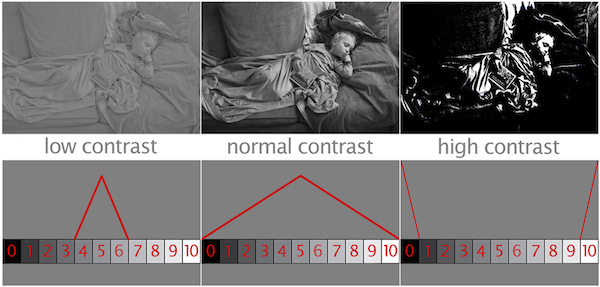What is contrast?
posted Sunday, April 5, 2015 at 1:06 PM EST

Contrast is the range between the blackest thing in your picture and the whitest thing. When you make the darkest thing in the picture darker and the lightest thing lighter, you have increased the contrast.
Fortunately, there’s a slider someplace in your editing program that makes it relatively easy. Knowing exactly how much to do it, however, is part of the art of photography and takes some practice.
Basically, you want your picture to be as contrasty as possible WITHOUT LOSING DETAIL IN ANYTHING. Then your pictures have snap and feel three-dimensional; they draw the viewer in.
If you watch the video, you’ll get a small introduction to Ansel Adam’s Zone System. It’s a way of dividing the world into ten shades of gray and it’s a fairly simple method for getting a handle on the way contrast works.

What I really want you to get from this exercise is to begin thinking in terms of using your contrast slider to give your pictures pop and still maintaining detail across the spectrum.
Distilling complicated concepts down to a point where I can hold the interest of all of our wonderful and extremely diverse subscribers is a fine line I’m walking on these photo tips. We could, for example, talk about contrast for days.
Don’t worry, we won’t! But I will probably come back to it again in the hope that I plant a seed in your brain or water an already healthy plant. I do believe this stuff is worth thinking about regardless of your skill level.
(An exceptional educator and a world-class photographer, Nick Kelsh is the founder of How To Photograph Your Life, an excellent source of affordable photography training and tips. Nick's courses can be conducted by yourself in your own time, or with feedback from Nick and your fellow students. If you appreciated this article and want to improve your photography, visit How to Photograph your Life and sign up for a course today!)